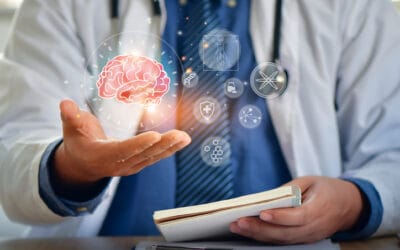The science of longevity
How and how long we live depends not only on our genes. Several studies have shown that there are epigenetic mechanisms that can repair DNA damage, increase longevity and reduce the risk of disease. Here is what we know todayIn the last century the average lifespan has almost doubled from 46 to 75 years, and is expected to exceed 85 years in 2050.This change is due to a number of concomitant factors: over 50 years of absence of major conflicts, economic progress that has allowed access to uncomparable levels of nutrition and hygiene, and unprecedented medical and scientific progress. Yet there is still room for improvement: it is estimated that our organism has the intrinsic capacity to live 115-120 years.The improvement in lifespan has raised the issue of quality of life in a larger segment of the population, from the increased incidence of chronic and degenerative diseases to the loss of functional capacities coincident with a growing demand for maintaining professional capabilities and social fulfilment.Can we reach an advanced age without getting old? Recent studies suggest we can.
Epigenetic aging
The big question today is: can we reach an advanced age without getting old? Without losing our physical and cognitive abilities, maintaining our current level of performance and, perhaps, recovering what we have lost? Studies conducted in recent years in the field of the biology of aging suggest that we can. A fundamental step in aging well is linked to epigeneticsLiterally "above genetics." This term refers to all biochemical processes which, without modifying the DNA sequence, affect the expression of genes, both "switching them on" and "switching them off". (which literally means “above genetics”). What is written in our genetic code does not inevitably dictates how we live: genes, the functional units of our DNA, can be more or less expressed. Epigenetics is the set of all those processes that, without modifying the DNA sequence, regulate gene expression.The implementation of this genetic potential therefore depends on epigenetics, which in some cases confers advantages but in others increases the risks. Just think of the conditions for which familiarity exists, such as hypertension or type 2 diabetes: there is a genetic predisposition, but in many cases it is our lifestyle that determines whether we will become hypertensive or diabetic.
A fundamental step in aging well is linked to epigeneticsLiterally "above genetics." This term refers to all biochemical processes which, without modifying the DNA sequence, affect the expression of genes, both "switching them on" and "switching them off". (which literally means “above genetics”). What is written in our genetic code does not inevitably dictates how we live: genes, the functional units of our DNA, can be more or less expressed. Epigenetics is the set of all those processes that, without modifying the DNA sequence, regulate gene expression.The implementation of this genetic potential therefore depends on epigenetics, which in some cases confers advantages but in others increases the risks. Just think of the conditions for which familiarity exists, such as hypertension or type 2 diabetes: there is a genetic predisposition, but in many cases it is our lifestyle that determines whether we will become hypertensive or diabetic.Epigenetics is easily influenceable and research has already discovered how to do it.
 Our organism possesses remarkable capacities of DNA self-repair and adaptation, thanks mainly to the epigenetic mechanisms. It is when these mechanisms stop working that we speak of epigenetic aging, which is considered the basis of the gradual loss of the physiological reserve (which we call “longevity reserve“) with which we are born and which represents our potential to live in good health for a long time.Many aging mechanismsSo far 9 key mechanisms (hallmarks) of aging have been identified and epigenetics plays a major role. Epigenetic aging is closely related to all the other hallmarks of aging, such as metabolic, immune and cognitive aging, depending on the system we consider. It is also beleived that improvement of only one of these 9 hallamrks, can impinge in all the others leading to a rebalance of the whole system.DNA vs Epigenetics: What matters the most?Gene variants (or polymorphisms, i.e. genes that differ by a single letter in the DNA sequence within a population) have been identified that can accelerate or slow down aging.Carrying a gene variant that accelerates aging is not necessarily bad news.The understanding of epigenetic mechanisms has made it clear, however, that being a carrier of an unfavorable variant is not necessarily bad news, because epigenetics can “limit the damage”. And even when the variant is favourable, epigenetics continues to be important.
Our organism possesses remarkable capacities of DNA self-repair and adaptation, thanks mainly to the epigenetic mechanisms. It is when these mechanisms stop working that we speak of epigenetic aging, which is considered the basis of the gradual loss of the physiological reserve (which we call “longevity reserve“) with which we are born and which represents our potential to live in good health for a long time.Many aging mechanismsSo far 9 key mechanisms (hallmarks) of aging have been identified and epigenetics plays a major role. Epigenetic aging is closely related to all the other hallmarks of aging, such as metabolic, immune and cognitive aging, depending on the system we consider. It is also beleived that improvement of only one of these 9 hallamrks, can impinge in all the others leading to a rebalance of the whole system.DNA vs Epigenetics: What matters the most?Gene variants (or polymorphisms, i.e. genes that differ by a single letter in the DNA sequence within a population) have been identified that can accelerate or slow down aging.Carrying a gene variant that accelerates aging is not necessarily bad news.The understanding of epigenetic mechanisms has made it clear, however, that being a carrier of an unfavorable variant is not necessarily bad news, because epigenetics can “limit the damage”. And even when the variant is favourable, epigenetics continues to be important. Blue Zones are well defined geographical areas with high percentages of centenarians. The key pillar is certainly the genetic continuity of the population, but the role of specific habits, which concern diet and physical activity, and the environment appears to be predominant.
Blue Zones are well defined geographical areas with high percentages of centenarians. The key pillar is certainly the genetic continuity of the population, but the role of specific habits, which concern diet and physical activity, and the environment appears to be predominant. Some genes have been identified, called longevity genes, whose activity is measurable and modifiable.
The longevity genes
The longevity genesLet’s take the case of Blue Zones, well defined geographical areas with high percentages of centerians. Their key pillar is certainly the genetic continuity of the population, but the role of specific habits, which concern diet and physical activity, and the environment appears to be predominant.This is because, as is now clear, our genome has the ability to “dialogue” and “adapt” to the environmental context in which it operates. If this dialogue is properly governed, the 9 hallmarks of ageing will be triggered much more gradually or will not occur at all, leading to good health and good quality of life. And giving the possibility to live the maximum of the individual own longevity reserve.SirtuinsSirtuins are proteins expressed by SIRT genes that perform an enzymatic activity, which means they stimulate chemical reactions essential for the body. Their function has been ascertained by several studies, although there still seems to be a lot to know about them. SIRTs in short:• are proteins with enzymatic properties
• regulate the metabolic processes related to insulin resistance
• have a control over immunity
• have a fundamental role in epigenetics
• are involved in defences against cancer
activate under stressful conditions – such as nutrient shortages and cold temperatures – or in the presence of threats, to reduce cellular reproduction activity and concentrate all resources on survival. All organisms have sirtuin genes. Among their most important functions is to self-activate in conditions of metabolic stress – such as nutrient shortages and cold temperatures – or in the presence of threats, to reduce cellular reproduction activity and concentrate all resources on survival.
 It has been known since the 1930’s that a moderate calorie restriction prolongs life, and it has been later demonstrated that this is due to the action of sirtuins.
Today we know that lifestyle can influence the expression (i.e. “production”) and activity of sirtuins, such as moderate fasting and calorie restriction. It has been known since the 1930’s that moderate calorie restriction prolongs life. In the early 2.000. it was found that calory restriction acts via the induction of sirtuin activation.Another moderate stress capable of modulating the expression of these proteins is non-competitive physical activity. Not only that. Both what we eat and the time of the day we eat (e.g. avoid certain foods before sleep) affect their activity. We have also identified some active ingredients (molecules naturally present in the plant world) that can stimulate sirtuins and increase their effectiveness.Monitoring epigenetic aging, chrono-nutrition programs, nutritional supplementation with active ingredients of natural origin, moderate physical activity programs and neurocognitive training are the cornerstones of an effective strategy to stimulate sirtuin activity and preserve our “longevity reserve”. And they are the fundamental axes of SoLongevity’s research.SoLongevity ReseachSoLongevity’s research leverages on the intervention on 5 of the 9 hallmarks of aging, through a medical program based on the principle of “measuring and acting“, and the use of cutting edge instruments of Precision Medicine.
It has been known since the 1930’s that a moderate calorie restriction prolongs life, and it has been later demonstrated that this is due to the action of sirtuins.
Today we know that lifestyle can influence the expression (i.e. “production”) and activity of sirtuins, such as moderate fasting and calorie restriction. It has been known since the 1930’s that moderate calorie restriction prolongs life. In the early 2.000. it was found that calory restriction acts via the induction of sirtuin activation.Another moderate stress capable of modulating the expression of these proteins is non-competitive physical activity. Not only that. Both what we eat and the time of the day we eat (e.g. avoid certain foods before sleep) affect their activity. We have also identified some active ingredients (molecules naturally present in the plant world) that can stimulate sirtuins and increase their effectiveness.Monitoring epigenetic aging, chrono-nutrition programs, nutritional supplementation with active ingredients of natural origin, moderate physical activity programs and neurocognitive training are the cornerstones of an effective strategy to stimulate sirtuin activity and preserve our “longevity reserve”. And they are the fundamental axes of SoLongevity’s research.SoLongevity ReseachSoLongevity’s research leverages on the intervention on 5 of the 9 hallmarks of aging, through a medical program based on the principle of “measuring and acting“, and the use of cutting edge instruments of Precision Medicine.- Precise measurement of epigenetic aging and biological ageDifferent from chronological age. It is a measure of the body's ageing, based on the effectiveness of the mechanisms that keep cells young and on markers of the functionality of organs and apparatus.
- Measurement of physiological parameters, focused on three dimensions:
- The immuno-metabolic dimension, i.e. the evaluation of metabolic and inflammatory parameters.
- The neurocognitive dimension, i.e. the evaluation of cognitive abilities to develop a path for their enhancement and/or recovery.
- The cardio-respiratory and muscle-skeletal dimensions, i.e. the evaluation of the physical state to establish the optimal level of motor activity.
- Targeted and personalized intervention on the sirtuin system through three strategies: nutrition, dietary supplementation based on active ingredients of natural origin and physical activity.




